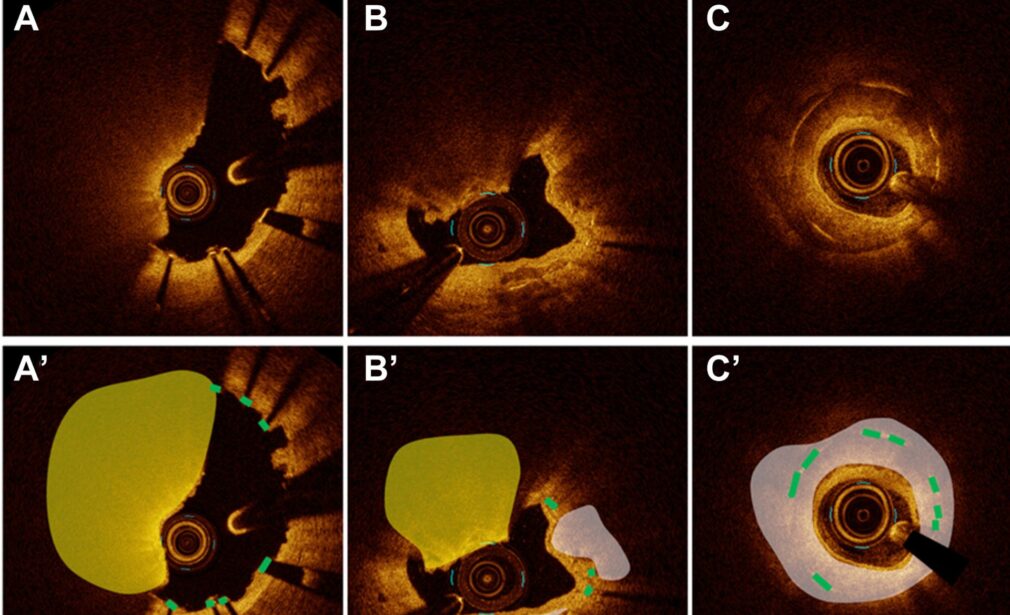Advanced Treatment for Calcified Coronary Lesions in Mohali
Understanding Calcified Coronary Lesions
Calcified coronary lesions are hardened blockages in the arteries caused by calcium deposits building up over time. These deposits make artery walls stiff, narrow the passage for blood flow, and increase the risk of heart complications such as angina, heart attack, or heart failure.
Unlike soft plaques, calcified lesions cannot be easily treated with standard balloon angioplasty because the rigid calcium prevents proper stent expansion. This is why specialized interventional cardiology procedures are essential.
At her Mohali-based practice, Dr. Honey Sharma specializes in advanced treatment techniques for heavily calcified coronary blockages, using methods like Rota-Ablation (Rotational Atherectomy), Intravascular Lithotripsy (IVL), and Cutting Balloon Angioplasty to restore blood flow with precision and safety.
Why Calcified Lesions Are Difficult to Treat
Standard balloons may fail to expand inside the artery due to calcium hardness.
Incomplete stent expansion increases the risk of restenosis (re-blockage).
Heavily calcified arteries require precision tools to avoid vessel injury.
These cases demand the expertise of an experienced interventional cardiologist like Dr. Sharma, who uses OCT (Optical Coherence Tomography) and IVUS (Intravascular Ultrasound) for imaging-guided accuracy.
Causes of Calcified Coronary Artery Disease
Long-term atherosclerosis (cholesterol plaque buildup)
Advancing age
Diabetes mellitus
High blood pressure and high cholesterol
Chronic kidney disease
Smoking and sedentary lifestyle
Symptoms That May Indicate Calcified Lesions
Persistent chest pain (angina)
Shortness of breath during activity
Fatigue and weakness
Dizziness or fainting spells
Chest discomfort triggered by stress or exertion
If you’re in Mohali or nearby areas and experience these symptoms, consult Dr. Honey Sharma for a complete cardiac evaluation.
Diagnosis of Calcified Coronary Lesions in Mohali
Dr. Sharma uses advanced diagnostic tools to confirm and assess calcified blockages:
Coronary Angiography (CAG) to visualize artery narrowing
OCT & IVUS imaging for detailed internal artery scans
CT Coronary Angiography to detect calcium deposits before intervention
Advanced Treatment Techniques
1. Rota-Ablation (Rotational Atherectomy)
Rota-Ablation uses a diamond-coated rotating burr to gently grind away calcium from artery walls.
Allows balloons and stents to expand properly
Ideal for severe concentric calcification
Improves blood flow and long-term stent performance
2. Intravascular Lithotripsy (IVL)
IVL delivers acoustic shockwaves inside the artery to crack and soften calcium deposits.
Targets deep and eccentric calcium
Minimizes vessel trauma
Enhances balloon and stent expansion for better results
3. Cutting Balloon Angioplasty
A cutting balloon has microscopic blades that score the calcium before inflation.
Allows controlled expansion of the artery
Reduces risk of vessel tearing compared to high-pressure balloons
Effective for resistant plaque and fibrotic lesions
Why Choose Dr. Honey Sharma for Calcified Lesion Treatment in Mohali
Super-specialization (DrNB) in Interventional Cardiology from Fortis Hospital, Mohali
Expert in complex and high-risk coronary interventions
Extensive experience in Rota-Ablation, IVL, and Cutting Balloon techniques
Uses OCT and IVUS for maximum precision and safety
Delivers personalized care with high success rates
Benefits of Advanced Calcified Lesion Treatment
Restores blood flow effectively
Reduces risk of re-blockage
Minimally invasive, faster recovery compared to bypass surgery
Short hospital stay (usually 1–2 days)
Safe for elderly and high-risk patients when performed by an expert
Recovery After the Procedure
Most patients can resume light activity within a week
Medications are prescribed to prevent clots and control cholesterol
Lifestyle guidance for diet, exercise, and stress management
Regular follow-ups to monitor stent function and heart health
Risks and Safety Measures
While every procedure has potential risks such as vessel injury or bleeding, Dr. Sharma’s imaging-guided precision techniques significantly reduce complications.
FAQs – Calcified Lesion Treatment in Mohali
1. How can I tell if my artery blockage is calcified?
Only specialized imaging like OCT or IVUS can confirm calcium buildup.
2. Is Rota-Ablation safe?
Yes, in experienced hands, it is safe and highly effective for hard blockages.
3. When is IVL preferred over Rota-Ablation?
IVL is better for deep or eccentric calcium; Rota-Ablation works best for superficial concentric calcium.
4. Can lifestyle changes remove calcium deposits?
Lifestyle changes prevent progression but cannot remove existing hardened calcium.
5. Is open-heart surgery needed for calcified lesions?
Most cases can be treated with advanced angioplasty techniques without bypass surgery.
6. How long does the procedure take?
Typically 60–90 minutes, depending on complexity.
7. How long will my stent last after treatment?
With proper expansion and care, stents can last many years without issues.
8. Can untreated calcified lesions cause sudden heart problems?
Yes, they can cause sudden blockages leading to a heart attack.
9. What is the recovery time?
Light activity is possible within a week; full recovery in 2–4 weeks.
10. Why is Dr. Honey Sharma recommended in Mohali for this?
Her expertise in complex coronary interventions and access to the latest technology ensures the best outcomes for patients with calcified lesions.
Book Your Consultation Today
If you have been diagnosed with calcified coronary blockages or experienced failed stent attempts due to calcium, advanced treatments like Rota-Ablation, IVL, and Cutting Balloon Angioplasty could be your solution.

